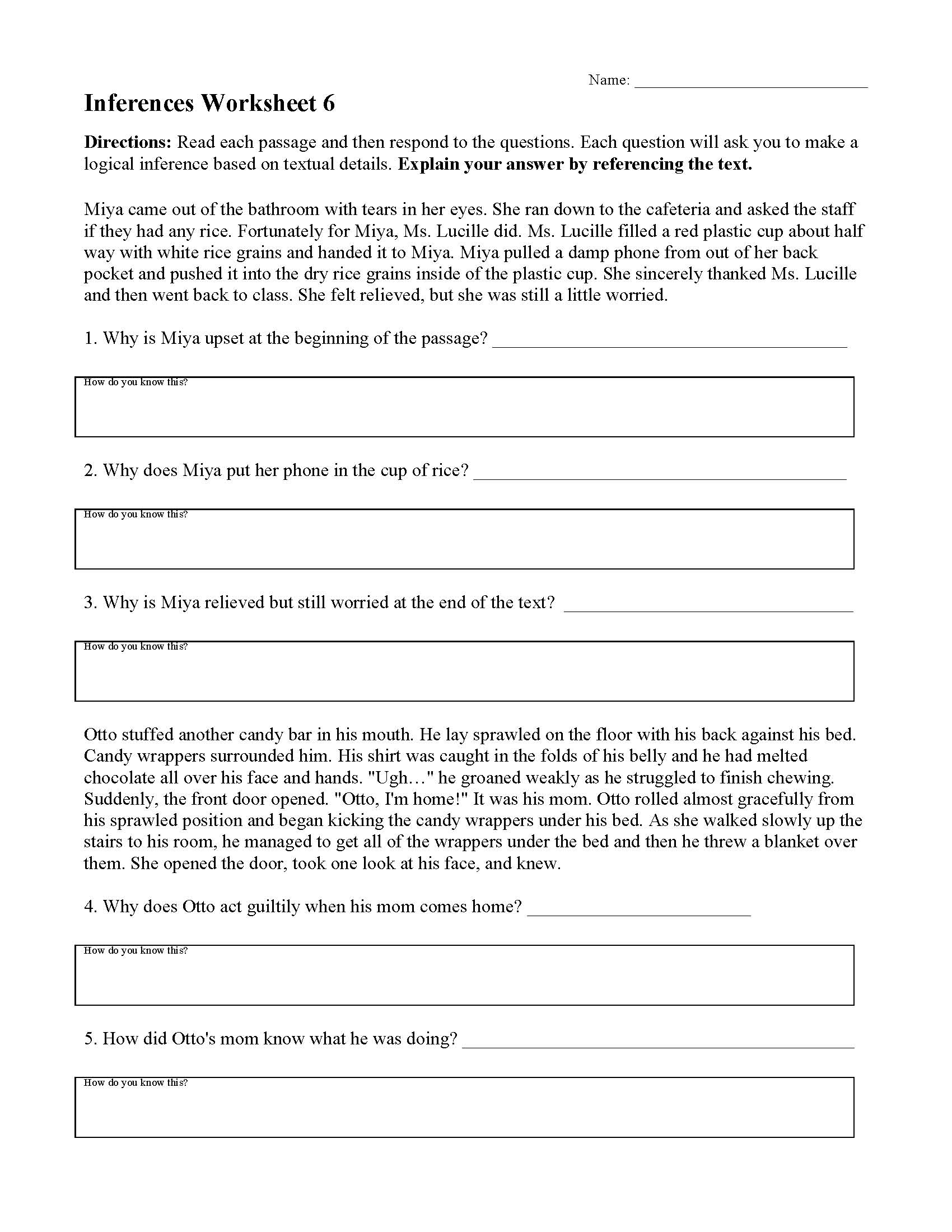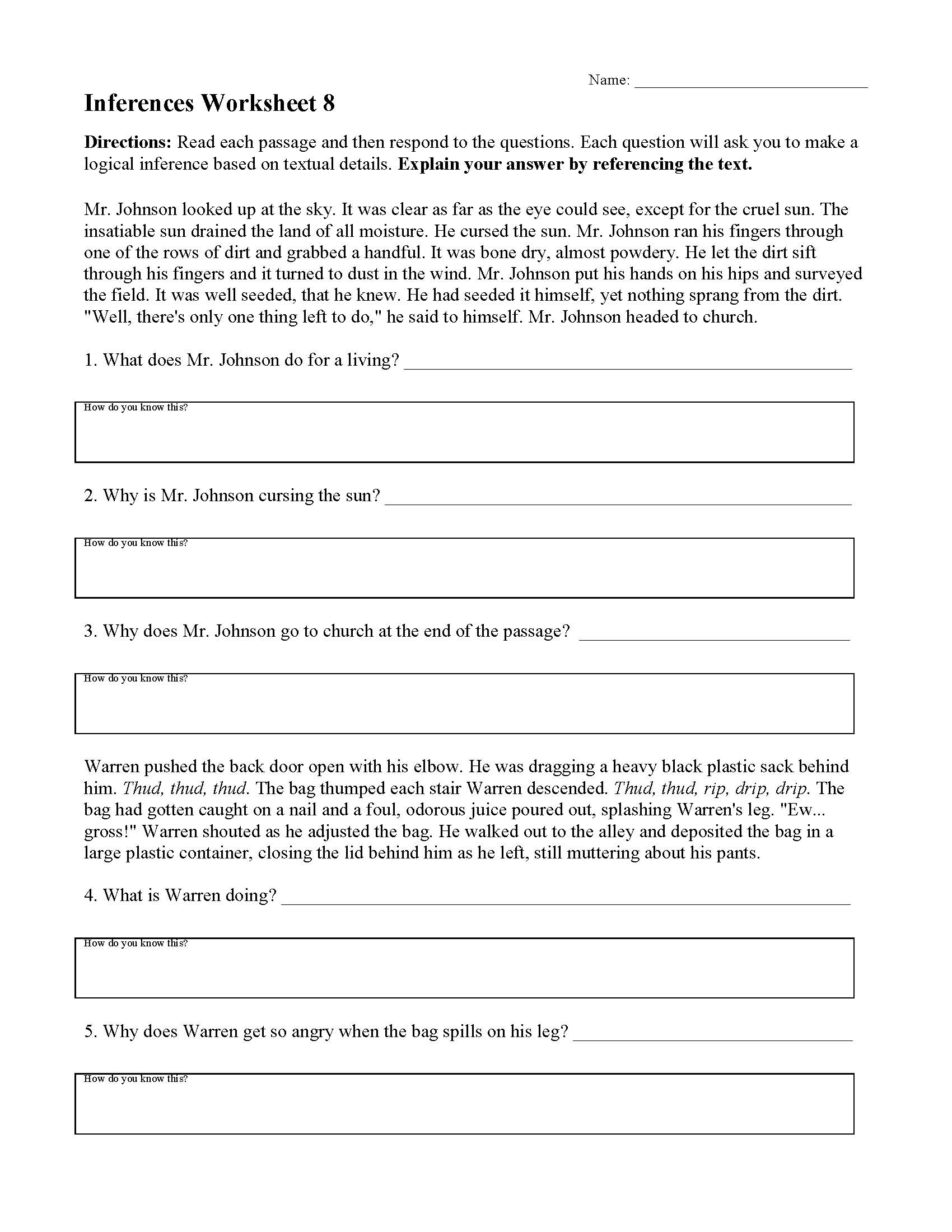
Making inferences is a skill with which students often need much practice. If you've looked for resources in the same places that I have, you probably haven't been too happy with what you found. I believe that the inference worksheets that I've created are of a higher quality than the other available resources and, as usual, I'm giving them away for free. I hope that you'll appreciate these inference worksheets and that your students may better this valuable reading skills.
How These Worksheets WorkStudents are asked to do two things: answer questions that require making logical inferences and explain how they got their answers. Having students explain their answers helps to slow them down. It makes them think about what they are doing. Also, open-ended questions make it easier for the teacher to identify when students are copying.
I recommend that teachers assign the online versions of these activities. Students get instant feedback, have the opportunity to improve, and are still required to answer the open-ended questions. Feel free to leave a comment if you have a question or need further clarification about any of these worksheets.
Inferences Worksheet 1Looking for a worksheet on making inferences? Check this out. Students read the short passages and then answer the inferential questions. Then they explain their answers by referencing details from the text. Suggested reading level for this text: Grade 4-8






Here is another worksheet on making inferences. Students read the passages and answer inferential questions. Then they support their answers with evidence from the text. Suggested reading level for this text: Grade 3-7






Here's another inference worksheet to give students practice with this challenging reading skill. Students will read the passages, answer the questions, and support their answers with textual evidence. Suggested reading level for this text: Grade 3-7.






Here is another high-quality inference worksheet. Students read the passages, answer the inferential questions, and explain their answers by using text. Suggested reading level for this text: Grade 3-7.






Here is another inference worksheet to get those gears grinding. This one has four reading passages and ten problems. Students read the passages, answers the inferential questions, and use text to support their answers. Suggested reading level for this text: Grade 3-7.






Many students have difficulty answering inferential questions. This worksheet has ten more practice problems to help students develop this critical reading skill. Read the passages, answer the inference questions, and support answers with text. The Suggested reading level for this text: Grade 3-7





"More inference worksheets!" your students cheer as you come marching through the door holding this inference worksheet. It looks like all of the others: it is double-sided and has ten problems. This one is brand new though. The joy spreads through the room. It is contagious. The students read the passages, answer the inference questions, and support their responses with text. Suggested reading level for this text: Grade 3-7.





It's always nice to have choices. And in the spirit of having choices, I present this eighth inference worksheet. This one is double-sided and contains ten inference questions. Students read the passages, answer the questions, and support their responses with text. Suggested reading level for this text: Grade 3-7.





What's better than a ten problem inference worksheet? An eleven problem inference worksheet! That's right. This worksheet has eleven inference problems. I couldn't decide on which one to remove, and the passages are short enough that lucky number eleven fits. Students read the passages, answer the 11 questions, and support their answers by using text. Suggested reading level for this text: Grade 3-7.





Are you still looking for inference worksheets? Here is the tenth in a series. Wow, that's a lot of inferences. Read the passages, answers the inference questions, and support all responses with text from the passage. I hope this will help students master inferences. Suggested reading level for this text: Grade 3-7.






R.1 - Read closely to determine what the text says explicitly and to make logical inferences from it; cite specific textual evidence when writing or speaking to support conclusions drawn from the text.
RL/RI.4.1 - Refer to details and examples in a text when explaining what the text says explicitly and when drawing inferences from the text.
RL/RI.5.1 - Quote accurately from a text when explaining what the text says explicitly and when drawing inferences from the text.
RL/RI.6.1 - Cite textual evidence to support analysis of what the text says explicitly as well as inferences drawn from the text.
RL/RI.7.1 - Cite several pieces of textual evidence to support analysis of what the text says explicitly as well as inferences drawn from the text.
RL/RI.8.1 - Cite the textual evidence that most strongly supports an analysis of what the text says explicitly as well as inferences drawn from the text.
RL/RI.9-10.1 - Cite strong and thorough textual evidence to support analysis of what the text says explicitly as well as inferences drawn from the text.
RL/RI.11-12.1 - Cite strong and thorough textual evidence to support analysis of what the text says explicitly as well as inferences drawn from the text, including determining where the text leaves matters uncertain.